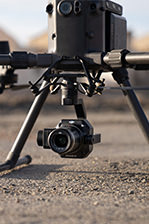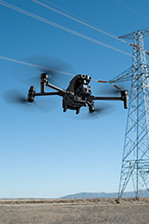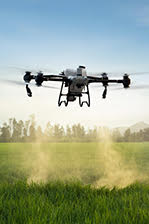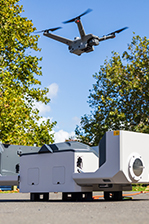Case Study: How Bare Hill Uses Drones for Smarter Farming
Nick and Alexis Wadsworth, a passionate farming couple, run Bare Hill Farm nestled in New Zealand's Hokonui Hills. Originally from engineering and rural banking backgrounds, they now operate this 2,000-hectare farm in Southland, managing a mix of sheep and cattle. Looking to improve their farming operations, they purchased a DJI Phantom 4 from Ferntech roughly 6 years ago. Since then, the drone has transformed their approach to farming, enabling efficient management and improving animal welfare. The following interview with Nick and Alexis dives into their experiences, the benefits and challenges of drone technology, and their thoughts on the future of tech in farming.
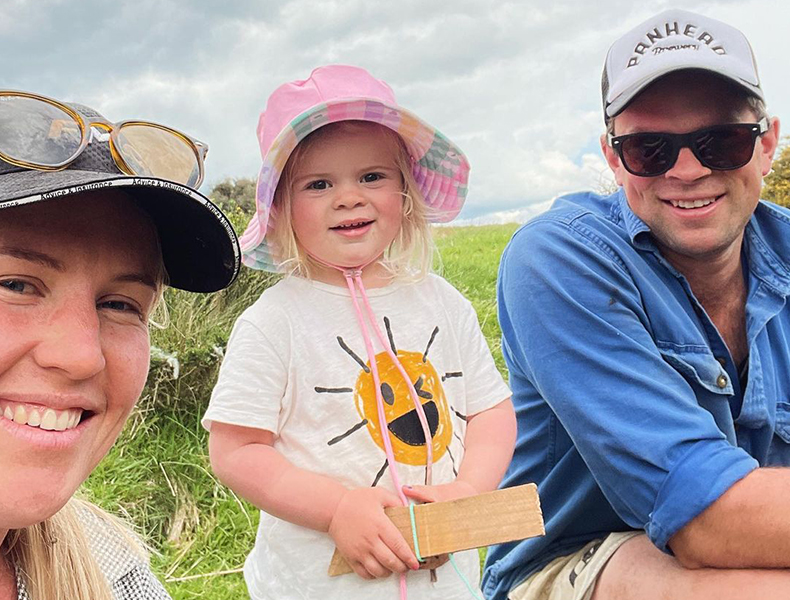
Q: How long have you been farming, and how did you get started?
Nick: I started as an engineer in Dunedin for a couple of years before transitioning back to farming. I’ve been home about ten years now on the family farm, which we’ve recently succeeded, so it’s under our full operation now.
Alexis: I have a background in rural banking, which I was in for nearly ten years. Nick and I met at university and later decided to pursue farming as a shared goal. It’s been a great transition. We bought the property in 2020 from Nick’s family, so it’s a family operation. And then we had our wee girl in 2021, so we’ve been on the farm together since then which has been great.
Q: Where are you based, and what is your farm setup?
Nick: We’re located in the Hokonui Hills of Southern South Island, a rugged area with many gullies, hills, and rough terrain. Our farm covers around 2,000 hectares, with 600 hectares of effective farming land, around 300 hectares for hill development, and roughly 700 hectares of native vegetation. We raise a mix of cattle and sheep, with about 7,900 stock units total, and have a “breed ’em and feed ’em” approach.
Alexis: It’s a fairly broken sort of a farm – there are heaps of gullies and rough areas in each paddock. Although it’s rolling hill country, it’s still quite challenging to get around it at times – we don’t have a nice big lane up the middle where we can chuck animals in and they can go from A to B, it’s usually A to G and then back to B to get them round sometimes. It’s a fairly unique property, with lots of opportunity – hence the drone lends itself really well to helping us get a view of places that take forever to drive to.
Q: What prompted you to get a drone, and why?
Nick: From the start, I could see the benefit of flying a drone around the farm just observing stock without actually physically going into the paddock. It was a time efficiency thing and a labour thing at the time.
Alexis: I was working off farm full time, so it was only really me on the weekends or evenings, Nick full time during the day, and then we had a student through summer to help pick up the slack so we were running things really lean. So it was definitely the time factor and the ability to check on sheep in particular during lambing. At the peak, it was taking Nick close to a day. Whereas we can now check 1,000 sheep in half an hour with the drone, so it’s a massive time saving. We enjoy technology too, so we bring a lot of that into the farm in different ways.
.gif)
Q: Which drone are you using?
Nick: We use the DJI Phantom 4, which we got with a farmer’s pack through Fieldays from Ferntech. It came with a hard shell backpack and a second battery. There’s also a siren, but I haven’t had to use that as the noise of the drone shifts stock if you want them to.
Q: How was it learning to use the drone, and what challenges did you face?
Nick: It was relatively easy for me to fly. At a younger age I used to play video games, so you just picture yourself in the drone and you can fly around instead of looking at the screen.
Alexis: It didn’t find it as natural, but probably the only thing to get our head around was installing apps.
Nick: I was really keen to go out and get it going, so I went out, but we don’t have service here so I couldn’t get updates out there and it wouldn’t go – I had to come back and muck around with it at the house. But that’s just technicalities. All in all, you just have to plug it in and wait for things to update themselves which is fine. Actually looking on your phone was quite hard to see all the animals due to the screen size, so that took a bit of getting used to. But once you get your eye in it seems to be okay.
Q: What are the main uses of the drone on your farm?
Nick: Our primary use has been checking cast sheep at lambing time. So we spread all our sheep out, which we call set stocking, with ten sheep and maybe one cow to a hectare in every paddock. During the early few weeks when they’re lambing they’re quite prone to getting cast, which is when they just go to sleep, flip up on their back and can’t get up. So flying around and pinpointing those cast sheep instead of going around all the paddocks disrupting everything was the main interest in getting the drone.
And then throughout the remainder of the year, mustering cattle out of rough blocks that have broom and scrub when you can’t tell where the cows are. The dogs do a good job, but occasionally you’ll get those outlier cows that need more persuasion if they’re far away and the dogs miss them. The drone gives us that bird’s eye view, so we can fly around the cattle or any animal and they’ll just start moving away naturally
Alexis: Another benefit is aerial photography of farm changes and for developments. So we can chuck the drone up, take an aerial photo of a paddock and go, “oh yeah that makes sense for where we’re going to put a fence line”. Or we can take a photo of an area for development and Nick can get his engineering hat on and sketch based on the aerial photo – Google images doesn’t give you the detail that you need.
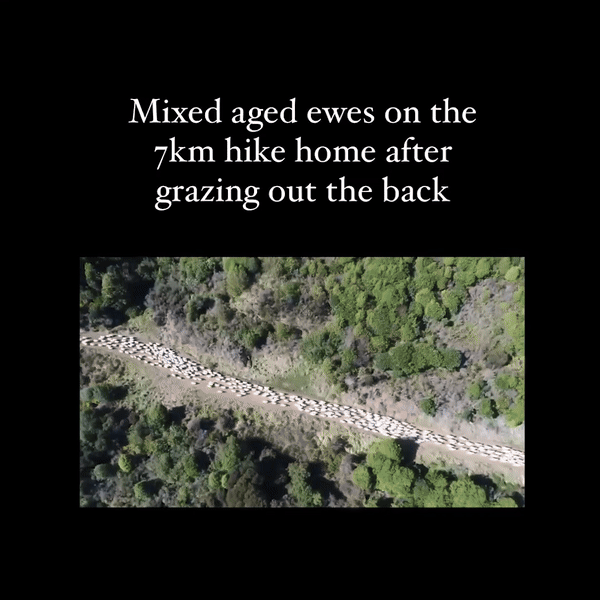
Q: What difference has the drone had on saving time or reducing livestock losses?
Nick: As far as cast sheep per day goes, there would be at least 2 per day over 60 days of lambing. But you don’t know where they're going to be, you sort of know where the hotspots are, so you can just fly the drone to those areas and have a quick look around and be back home in time for a cup of tea.
Alexis: I know when people have asked about the drone, the time taken to check sheep has been quite a good gauge for them, especially when we say it takes us half an hour to check 1,000 sheep. They’ve gone, “we're lambing 4,000 sheep and it takes us 8 hours to check them,” which is not uncommon because that's roughly what we were doing.
In terms of other benefits, the running cost of vehicles has been huge. When we first got the drone one of our bikes was due to be updated. We got another full season out of the bike because we saved so much time not having to drive around as much. We were also going through a tank of fuel a day on the bikes, so obviously that dropped back from filling up every 3 or 4 days, which is massive.
Nick: We also became more aware of animal behaviour. We noticed when we put the drone up the ewes had tucked their lambs under tussocks and in shelters, especially if there's a storm coming. If we had driven through paddocks at that time we would have scattered everything and potentially mis-mothered stock or exposed lambs to bad weather. By flying the drone, you're not disrupting any of that.
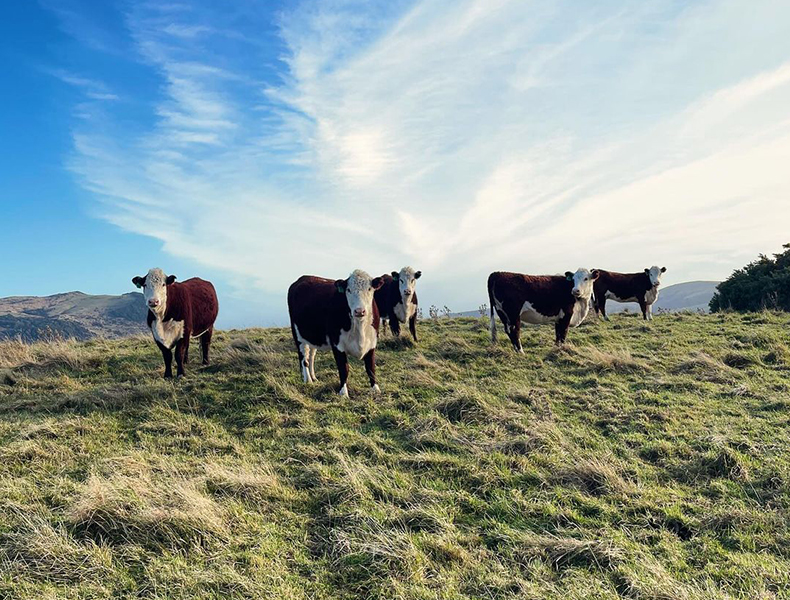
Q: What are some challenges or additional features you’d like in a drone?
Nick: As far as all weather flying goes, the Phantom struggles a bit in the wind. Springtime's always notorious for wind, so if we can't fly the drone we have to drive around. And although the camera is quite good, you have to angle it right so you avoid sun glare to get the picture right. Then the next thing is probably if the camera had a zoom so you didn't actually have to fly all the way down to pinpoint certain sheep.
For future things, using a thermal camera to tell when an animal's in a bit of stress would be good. I realise that a thermal camera will pick up all the animals, but if it could pinpoint which ones were hotter, like a stuck lamb or calf would have a bit more stress. So if you could fly to that animal and you know you're gonna save it, then that's gonna be beneficial.
Alexis: A spray drone would 100% be good for us, we would use it a lot. We've got a lot of significant gorse and broom, so we get a helicopter to target those obnoxious weeds and avoid the nice tussocks, grasses, and native plants. But gorse always comes back in a couple of years, so the spray drone would be good for automatically identifying and spraying that. Otherwise you're using a knapsack charging up and down.
Q: Are there any questions you get from farmers around this technology?
Alexis: A lot of the questions we're getting asked are around time. So how long does it take you to check how many sheep? Because of our topography, there's a big misconception that drones would never work on this sort of topography. So we make it clear that it does work well, you just have to drive to the top of the hill.
People are quite interested when you start talking about financial gains around fuel use, time savings, that sort of thing. We also get asked if we fly a set route or fly manually. We have found flying manually is the best option because we know where the hot spots are in the paddock. So you can go there and get a good view of the paddock and target certain points.
Q: What other technology do you use on your farm?
Alexis: We use a farm app called Resolution, which is a Southland-based company that has a massive user base particularly in the sheep and beef space. It is pretty much for farm recording, so anything we do we just put it into Resolution, whether it’s shifting sheep or plants and seeds, it all goes in there and then we’ve got a record of it. It also uses GPS, so if I'm driving around and I don't have a trailer with me, I can mark issues and then Nick can have a look and go pick up the ewe or something with the trailer.
We use modern ag equipment like drills that are computer mechanised, as well as proof of placement technology – if we have a fertiliser plane come in then we've already laid out where we need them to fly and they can see where they’ve been or haven’t been. We also have integrated weigh scale systems, a pretty kick ass weather station, and the John Deere tractor has a lot of different integrated systems too.
Q: How do you see technology shaping the future of farming?
Nick: The reality is with the cost to run a farm now we have to keep looking at new technologies and what other opportunities there are. Are there ways we can run this farm without having to rely on having a shepherd? Gorse spraying for example, or pasture monitoring all takes time. There is a little bit out there around the use of EID tags, but when you’ve got a few thousand lambs to tag it costs a lot of money. It’s all really exciting to just kinda keep an eye on.
Alexis: We've also got a lot of climatic pressure coming at us from our government. We do our best to stay ahead of the curve on that, but I have no doubt there's gonna be some technologies out there that will help us support that as far as emissions go. In addition, just the whole pasture to plate movement of what we're doing, how we're looking after animal welfare. So that when you're eating a steak that's come from Bare Hill you know that it has had a good life.
I think people are getting more confident with using drones and we're one of the first in our area. It’s still a bit of a foreign concept, but I think you’ll see more giving them a go at one point in their farming careers.
SPEAK WITH A SPECIALIST
Contact our team today to discuss the right solution for you.









